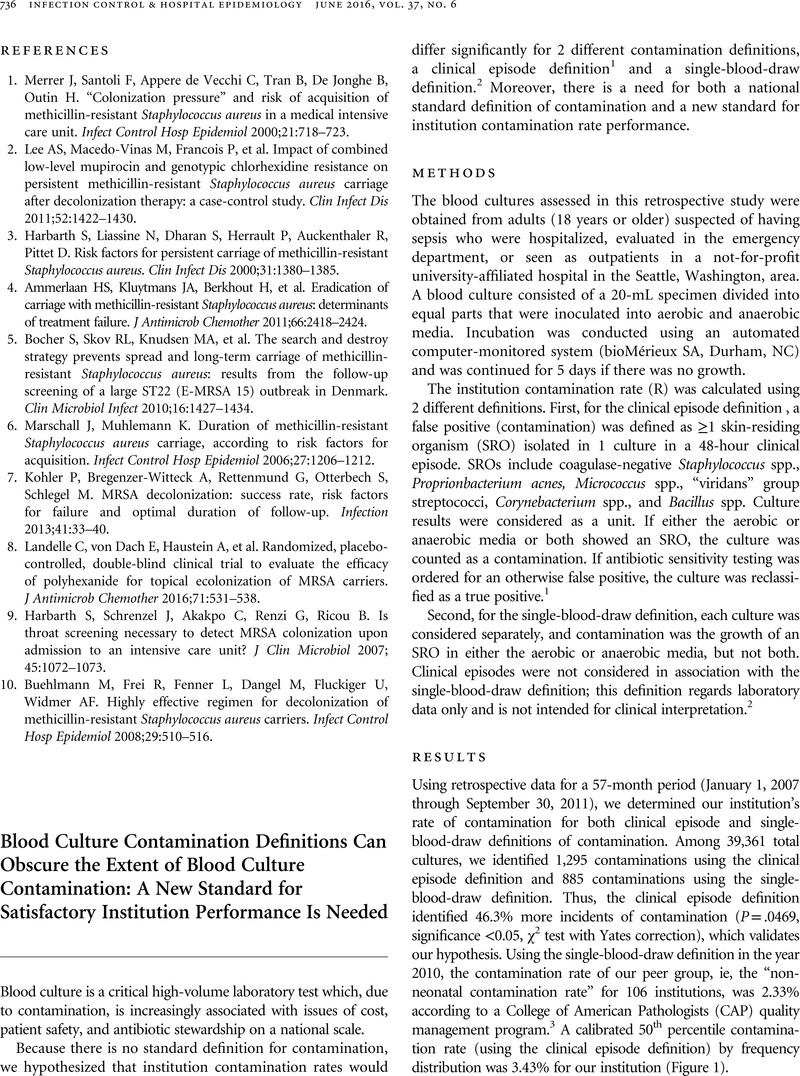Crossref Citations
This article has been cited by the following publications. This list is generated based on data provided by Crossref.
Lamy, B.
Ferroni, A.
Henning, C.
Cattoen, C.
and
Laudat, P.
2018.
How to: accreditation of blood cultures' proceedings. A clinical microbiology approach for adding value to patient care.
Clinical Microbiology and Infection,
Vol. 24,
Issue. 9,
p.
956.
Garcia, Robert A.
Spitzer, Eric D.
Kranz, Barbara
and
Barnes, Sue
2018.
A national survey of interventions and practices in the prevention of blood culture contamination and associated adverse health care events.
American Journal of Infection Control,
Vol. 46,
Issue. 5,
p.
571.
Lamy, B.
and
Sundqvist, M.
2018.
Towards an improved diagnosis of bloodstream infection: promises and hurdles.
Clinical Microbiology and Infection,
Vol. 24,
Issue. 9,
p.
933.
Callado, Gustavo Yano
Lin, Vivian
Thottacherry, Elizabeth
Marins, Tássia Aporta
Martino, Marinês Dalla Valle
Salinas, Jorge L
and
Marra, Alexandre R
2023.
Diagnostic Stewardship: A Systematic Review and Meta-analysis of Blood Collection Diversion Devices Used to Reduce Blood Culture Contamination and Improve the Accuracy of Diagnosis in Clinical Settings.
Open Forum Infectious Diseases,
Vol. 10,
Issue. 9,





